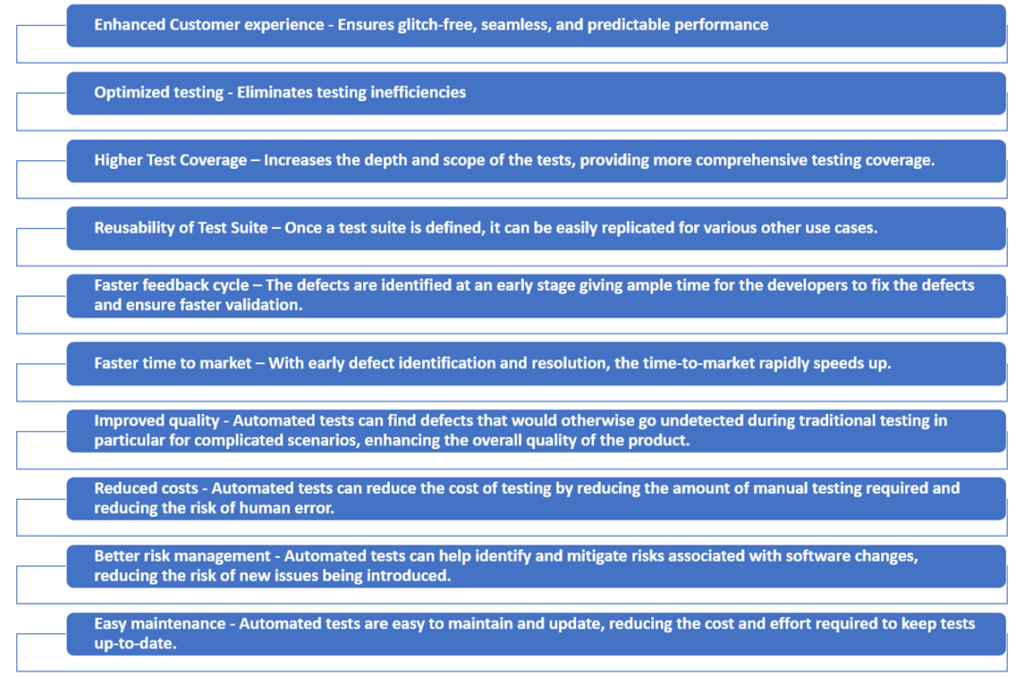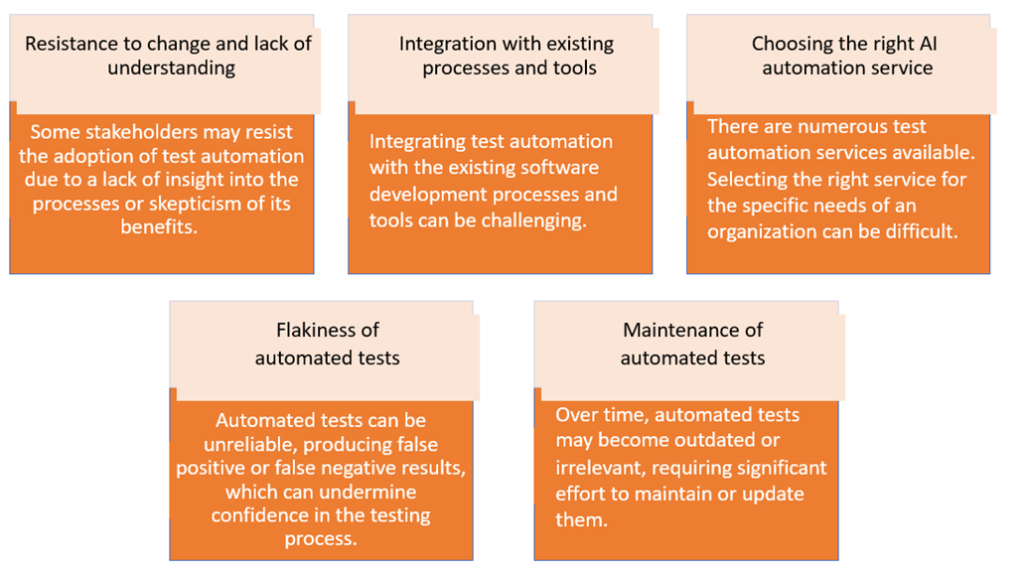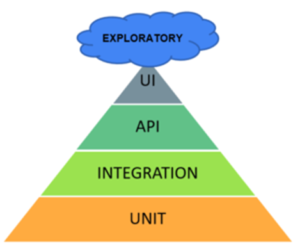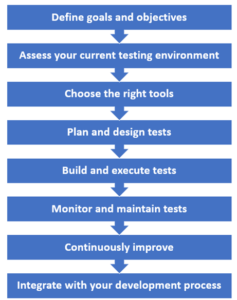
What and Why of Test Automation in Testing Landscape
Today, Technology and creativity know no bounds. AI, once regarded as science fiction and used as plot material for Hollywood movies, has become a near-ubiquitous technology that is enhancing our daily lives in our workplaces, homes, and across industries.
The market has been inundated with a steady stream of new digital products. The latest innovations have taken the IT world by storm. You can ask complex questions to ChatGPT and receive eerily humanlike responses. You also have a program called Codex that can write computer code; just describe the kind of software issue you’re attempting to fix, and Codex will provide a code solution in the form of a line of code.
The software testing industry too has undergone significant changes in recent years, with test automation becoming increasingly essential for organizations to remain competitive and deliver high-quality software. Test automation has become increasingly important for several reasons, including the speed and complexity of software development, the need for increased efficiency and accuracy, and the limitations of manual testing.
According to GMinsights‘ most recent analysis, Automation Testing is now valued at USD 20 billion and is anticipated to grow at a 15% CAGR between 2023 and 2032.
In this article, we will explore why test automation is so important in today’s software testing industry.
Harnessing Test Automation as a catalyst for change
You cannot talk about the latest practices like DevOps, Continuous Delivery and Continuous Testing without the term Automation.
Applications may have defects in their usability, security, performance, or any combination of those factors. And the inevitable result of this will be a decline in market share, revenue, and customer loyalty. Test automation provides the necessary speed and scale to ensure that software releases are delivered quickly and with high quality, allowing organizations to remain competitive and meet the demands of their customers.
Reducing process lead time and costs through automation of labor-intensive, repetitive tasks frees up human resources for their core competencies and revenue generating tasks. Additional benefits also include:

Top Challenges for making the move to Test Automation
Organizations are realizing the immense potential of intelligent automation – how it increases value and efficiency across business processes. However, few teams are finding it a grueling task to make the move.
The Tricentis Software Fail Watch report states that 314 companies were impacted by software failures, affecting 3.6 billion people and costing $1.7 trillion in lost revenue.
Test Automation has numerous benefits, but it comes with its own set of challenges:

So, how do we Implement a Good Test Automation Strategy?
Despite the fact that automation involves serious effort and dedication, success isn’t that difficult to achieve. The secret is to research, plan, and solve. One of the key needs for the industry is to provide the C-suite and organizations with a roadmap to accelerate, scale, and sustain automation testing adoption.
The Test Automation Strategy defines a framework for automated test scripts. It calls for automating tests at different levels. The foundation and bulk of this test automation pyramid are unit and integration testing. Service layer or API testing is the next step, where the API tests are run against the service layer.
The GUI tests, which are at the top of the pyramid, validate the application as a whole at the presentation layer. Top it up with exploratory testing that identifies potential edge cases. Unlike scripted testing, exploratory testing uncovers unique and out-of-scope defects that would have otherwise been missed.

Although implementing a test automation strategy requires significant time and resource commitment, the rewards can be enormous, including improved quality, lower costs, and greater efficiency.
By following these steps, you can implement a successful test automation strategy that meets your specific needs and helps you achieve your goals:

Defining the scope will help keep all the teams on the same page.
Depending on the project’s needs, the development process, and the testing effort’s objectives, different types of automation tests may be employed.
Let us look at the types of tests that can be automated and how they help test every aspect of the system enabling users to achieve a frictionless experience.
Unique Capabilities of Webomates
At Webomates, we are engaged in some of the most innovative work in the field of software testing and could not be more excited about what’s ahead in the future.
Webomates CQ believes that adhering to a formal quality assurance process is essential for a successful release in order to maximize the advantages of automated testing. Our QA team also integrates intelligent automation and continuous testing principles throughout the entire software delivery pipeline in addition to the shift-left testing process.
We can assist you in achieving a trouble-free release each and every time with a perfect fusion of Agile, DevOps, a patented AI Defect Predictor tool and a test automation framework!
Leverage Webomates Automation framework for UI, API, Mobile Web, Mobile Native,
and Visual testing.
Summary
The problem: Taking testing from ideation to large scale requires an end-to-end testing process in place to maintain and manage an application while minimizing cost and maximizing gains for the organization.
The process: The first step is to access your current automation maturity – gather as many inputs and details about the current systems and processes. Create a roadmap for your automation testing journey after deciding your top business priorities. When enterprise goals are clear from the start, it is possible to map potential use cases against the present corporate strategy and prioritize certain opportunities.
The advantages: In addition to increasing efficiency and accuracy, test automation also boosts software quality and offers the speed and scale required to keep up with the rate of development. It also gets rid of the inconsistent results and time-consuming tasks that come with traditional testing.
The result: By adopting test automation, businesses can guarantee that their software releases are delivered quickly and with high quality, giving them a competitive edge in the quick-paced development environment.
Take advantage of Webomates’ unique capabilities when implementing Test Automation into your Automation strategy.
Please click here and schedule a demo, or reach out to us at info@webomates.co
Tags: AI Testing, Automation Testing, intellligent test automation, Test Automation
Test Smarter, Not Harder: Get Your Free Trial Today!
Start Free Trial
Leave a Reply